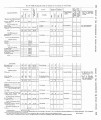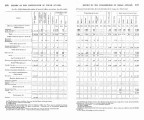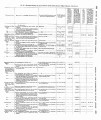| OCR Text |
Show I 36 REPORT OF THE COXMIYSIONER OF INDIAN AFFAIRS. * of future peace and harmony; but, a,few weeks later, the spirit of dis-affection was again dhvelo~edin the lanorant ort ti on of the Creeks to such an extentxhat the Crkek authori6es were-obliged to overawe the malcontents with a large armed force. This action, together with the interposition of a commission appointed by the Department to inres-tigate the troubles, and the presence of a United State8 military force, resulted in a peace un:!er substantially the cond~tionsa greed upon py the coutendina narties m October last. The whole matter now awalts the :ictio~o~f iii?U ~pnr twr~ulpro r1 the repw.t of the e#,u~minsiono f ill-v r s t i t i ~ .T ile Creeks, br tile l:~tratr eports, l~avr3 3 schools i l l ollrr-atiou. OUR of nhii:h is nuder the n~no.lgel~~oef lr~ltl r hletl~odistl lissiou Society, and another supported by thePresbyterians. The number of scholars in all the schools is 760. These Indians have, under treaties of August 7, 1790, June 16,1802, January 24,1826, August 7,1856, and June 14,1566, permanent annuities and interest on poneys uninvested as follows: In mouey, $68,258.40; for pay of blacksmiths and assistants, wagon.maker, wheelwright, iron aud steel, $3,250; for assistance in agricultural operations, $2,000; and for education, $1,000. The Secre- . tary of the Interior holds in trust for certain members of th.e tribe, known as "orphans," United States and State bonds to the amount of $76,999.66, tbe interest on uzhich sum is paid to t,hose of said orphaus who are alive, and to the reyreseutatives of those who hilve deceased. This orphan fund was derived from the sale of twer~tys ectious of laud reserved, per treaty of March 24,1832, for the orphan children of the Creeks. Most of the persons orig~nallye ntitled to these proceeds are dead, and action should be taken by Congress to authorize the payment of the full amount held in trust as above to the surviyors of them, and the representatives of those who ha,ve deceased. Seminoles.-The Seminoles, numbering 2,398, an increase of 190 over the census of 1871, have a reservation of 200,000 acres adjoining the Creeks on the west. This tribe formerly inhabited the section of coun-try now embraced in the State of Florida. Some of them removed to their present location uuder the provisions of the treaties of 1832 and 1833. The remainder of the tribe, instigated by the former chief, Osceola, repudiated the treaties, refused to remove, and soon after corn-menced depredating upon the whites. In 1835 these depredations re-sulted in war, which co~ltinueds even years, with immense cost. of blood and treasure. The Indians were at last ret~dered powerless to do fur-ther injury, and, after eEorts repeated through several years, were finally, with the exception of a few who fled to the everglades, removed to a reservation in the now Indian Territory. In 1866 they ceded to tl~e United States, by treaty, the reservation then owned by them, a.nd pur-chased the tract t,hey at present occupy. They are not so far advanced in the arts of civilized life as thecherokees, Choctaws, Chickasaws. and Creeks, but pre making rapid progress in that direction, and will, it is eonfidently believed, soon rank with the tribes named. They culti-vate 7,600 acres, upon which they raised daring the past year 300,000 bushels of corn and 6,000 bushels of potatoes. They live in log-houses, and ow~ i l ~ r sgteoc ks of cattle, horses, and hogs. A cause of discontent and just complaint on the part of this people is found in the fact that the Government, in providing them a new home, after the cession of their reservation under the treat.y of 1866, misled them as t,o thew boundary-line, so that ma.uy hare settled beyond the line, upon terri-tory still belonging to the Creeks, and have there established t.hem-selves in comfortable homes and upon lands which they havevery muoh mproved. The Seminoles so situated are troubled and dtscouraged, |



































































































